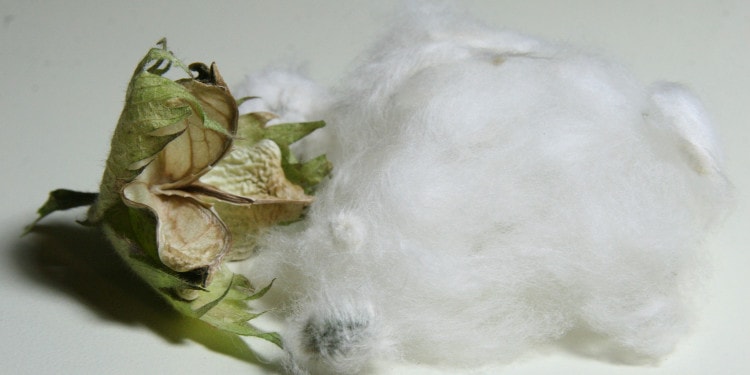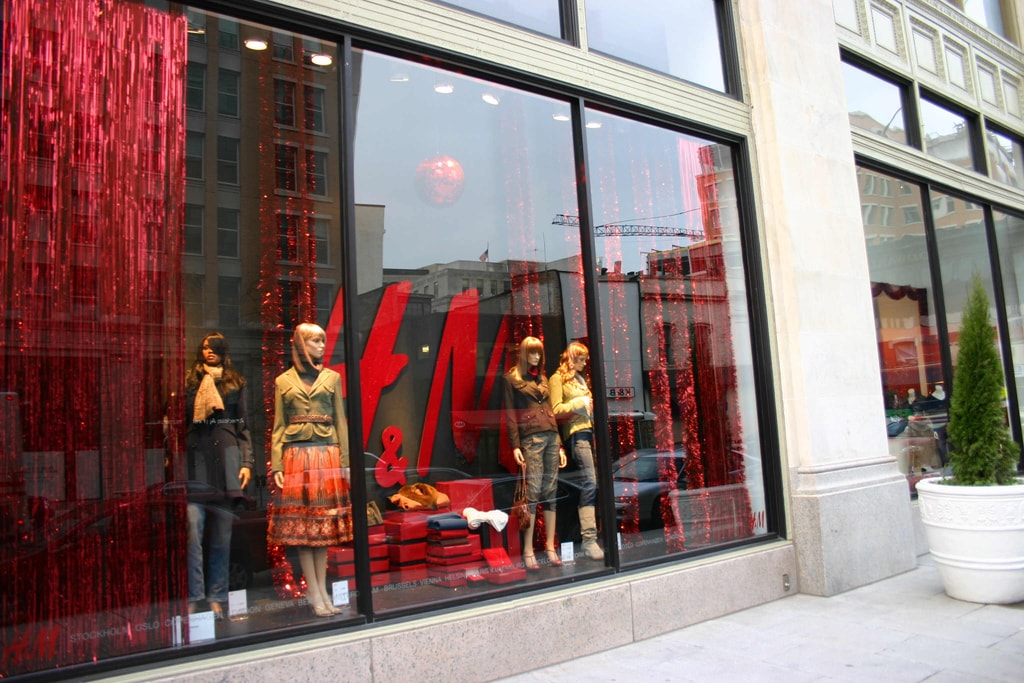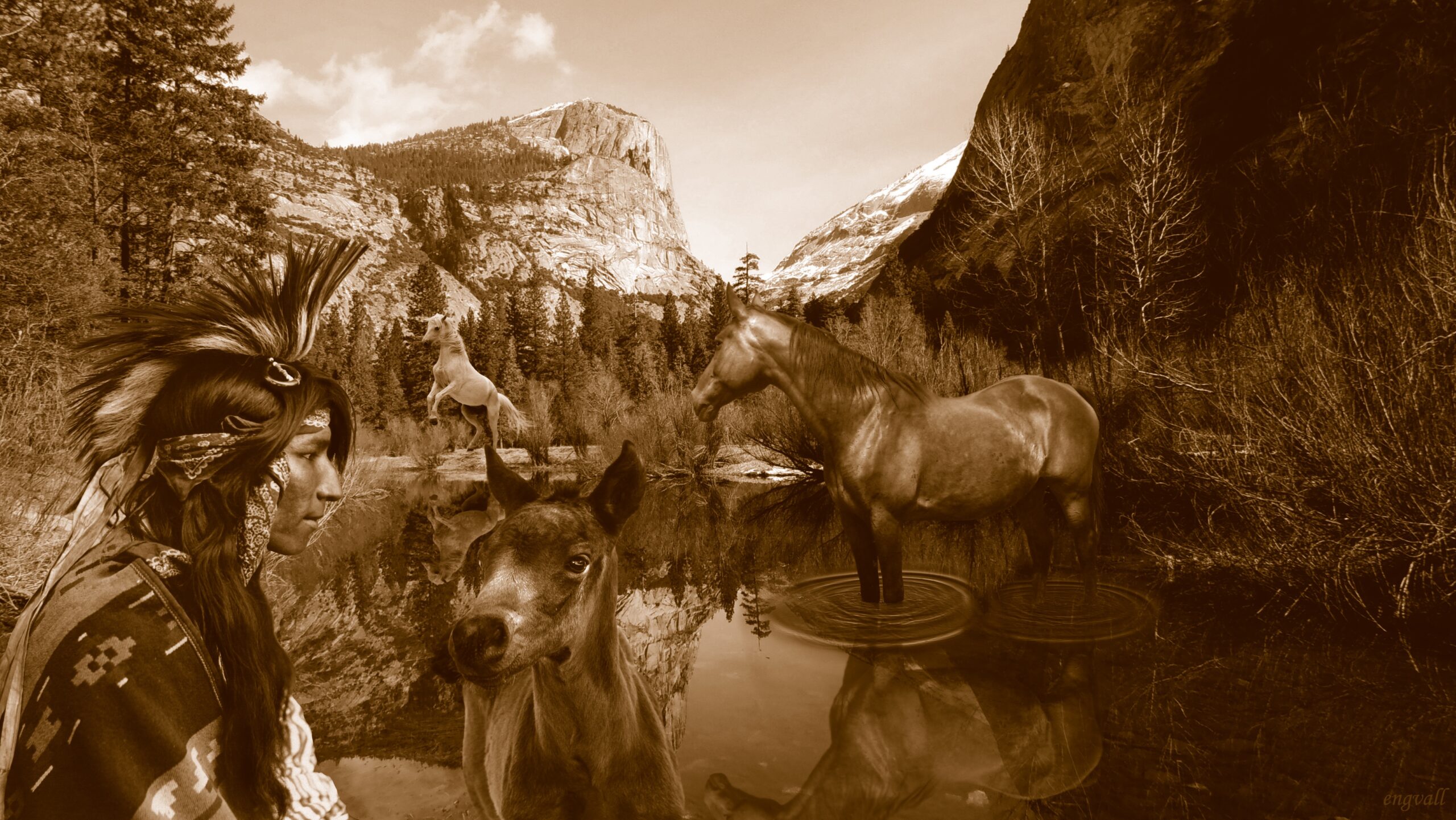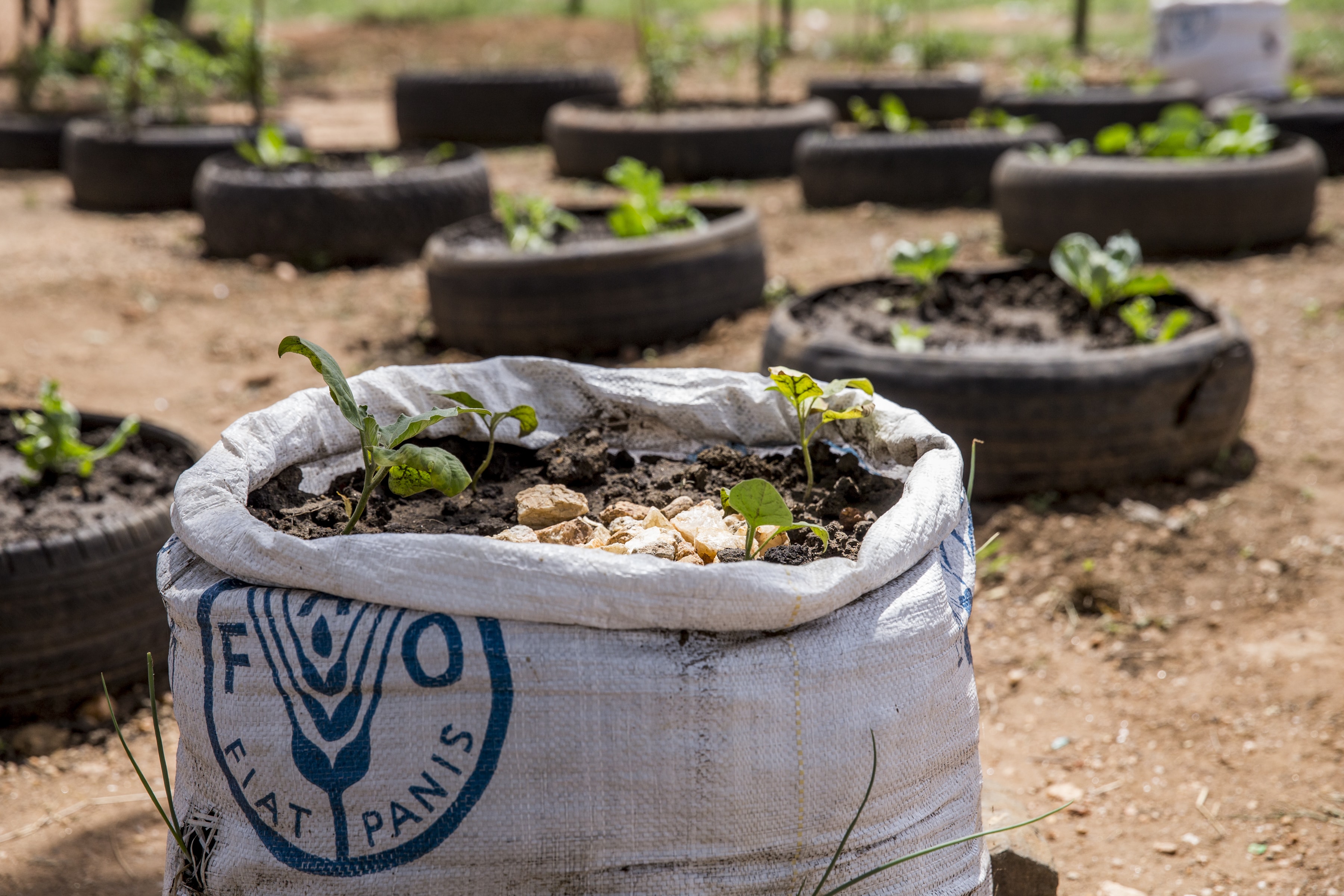For the everyday consumer, there is a wealth of information about eco-friendly and sustainable fashion: websites and magazines dedicated to sourcing ethical brands and retailers to boycott or advocate, but there is never a complete clean and ethical choice. Most apparel producers do not have any sustainability imitative at all. So the terms “eco” or “sustainable” have come to be misconstrued by large, powerful brands advertising and placing so much weight behind minimal environmental attributes to sell more clothes. Consumers are, unfortunately, being led to believe their overconsumption is helping a cause. The fashion industry is worth a whopping 3 trillion dollars; the noise and power of cheap fast fashion brands like H&M and Zara, churning out new lines within a space of a few weeks, are making astronomical profit with very little going to the textile workers in countries like Bangladesh, Ethiopia and Cambodia, or towards any environmentally friendly alternatives.
Despite what is often deemed as a positive, economic change for the everyday consumer, currently struggling to pay the bills, the devastating effects of cheap fast fashion on both the environment and workers is not only unethical, it raises questions about economic systems and our own sense of worth in the Western world. Dr. Nikolay Anguelov’s most recent work, The Dirty Side of the Garment Industry, first published in September last year, is an extraordinary and persuasive case for change in the fashion world. Looking at both policy and consumer perspectives, Anguelov outlines the broader, integrated ecological damage of the industry. The book delves into the impact of the textile industry on the environment and society whilst uncovering the full extent of textile processes, retail lies and how finding chemical and technological solutions are imperative.
Explain your background in the industry and how you came to build knowledge in the environmental and sustainable cause.
Nikolay Anguelov: When starting work on my dissertation on international trade, I read a report on foreign direct investment in the 2000s and how investors and global firms were positioning their assets. I noticed there was a very unique data point in the report that mentioned that my home country of Bulgaria was the number two country for foreign direct investment for textile plants. This appeared very odd to me because it was a very turbulent, political time for Bulgaria as a post-communist country, and economic performance was still low. During this time, there were also very strict requirements on joint ventures with foreign countries and so the transaction costs for foreign firms and building new textile plants in Bulgaria, altogether, didn’t seem intuitive.
My parents, one being an ecologist the other an agronomist, confirmed that there was no textile legacy of cotton plants in Bulgaria or any major connection with the industry. It didn’t make sense that textile firms worth millions of dollars were flocking to Bulgaria. So I started to build the information that is in the book: the changing nature of the garment industry; the proximity to market and fast fashion but, most importantly, what I refer to as environmental sourcing: places that are lax when it comes to environmental institutions and regulations or places where local governments are willing to turn a blind eye. That was exactly what was happening in Bulgaria and I looked into where the textile plants were going and found evidence of water pollution and other environmental issues.
What was the trigger that allowed such a huge change in garment production?
N.A.: Technology. One line that struck me when researching was in an interview with Karl Lagerfeld in 1992, he said: “The real fashion story of today is the fabric… 10 years ago you couldn’t do in design what you can today and for SO CHEAP!” He was referring to the versatility of the fabric, the innovation in technology that allowed poly blends: the blending of resilient fabrics that can come in many different textures and colors. Therefore, high-quality fabric became cheaper to produce and companies started to move into the realms of making clothes cheaper and cheaper so that profits would go up. Improved communication and supply chain management also helped to increase fast fashion, promoting impulse purchasing and over stimulation in their business models of retail. These business models became extremely successful and suddenly the commercial attributes of success had changed; previously linked with prestige, logo and expense; buying clothes is now about novelty, affordability, enabling a brand new era of consumption.
 The Dirty Side of the Garment Industry raises awareness of the environmental consequences of corporate textile manufacturing; can you summarize the main factors of a typical textile process?
The Dirty Side of the Garment Industry raises awareness of the environmental consequences of corporate textile manufacturing; can you summarize the main factors of a typical textile process?
N.A.: The most toxic processes are at the forefront of the industry: the growing of natural fibers, mostly cotton, and the process of turning these fibers into yarn. The wet processes: sizing, singeing, scouring and mercerizing all have separate steps where the fibers are made pliable with the use of alkali, acid, base and bleach. Singeing and scouring make the cotton flat and pliable but it’s the mercerizing which uses a process where the yarn is dipped in acid and then placed in base to stop the fibers deteriorating. The acid and base process makes the yarn really fine and porous enough to blend with polyester fibers. All of these toxic processes contaminates the water and it is widely known that acid cannot be purified; you have to dump it somewhere. This is the worst of the industry but the dying, which is a repetitive process of rinsing and dying, creates runs offs containing heavy metals, extremely poisonous to water supplies and the surrounding environment.
There are movements to pull away from toxic trace elements but there is no technology to make them steadfast – it is the metals that prevent the colors from running. Technology needs to, in essence, start from scratch to create new chemical processes; at the moment, the current technology is all we have.
On the other side of the argument there are those who believe that economic benefits are more important and outweigh any environmental damage; how do you sell a different perspective?
N.A.: As much as it is hard to convince consumers, it’s even harder to argue with those from a policy perspective; developing countries are trying to climb up the industrial ladder and they’re looking at industries that they can attract. Recently, I went to an economic development presentation and young man, sponsored by the government of Pakistan, talked about the wonderful things that are happening in the growth of organic cotton in Pakistan. He talked about how much the government is behind it to provide economic opportunities to farmers, lifting people out of poverty. How can you argue with that? It is a very complicated issue but this is how I explain it to my students: I talk to them about the social optimum, commercial activity where the overall benefits can still outweigh the overall negative impact. But when you have something where the social optimum is being surpassed and surpassed, it is perfectly fine to say we can scale back because surpassing the benefits associated with the social optimum is not equitable. Founder of the high street store Zara, Amancio Ortega is the second richest man on earth with an estimated net worth of 74.2 billion dollars, an example of a man who has surpassed the social optimum because he could live without at least 70 of that 74.2 billion dollars. The profits aren’t going into the economy, to workers in Bangladesh, it’s going up the corporate ladder and creating uncanny profit margins.
The focus on waste and recycling has been in the consciousness of the consumer for a while now but why haven’t any major improvements been made in policy?
N.A.: There is a 2025 initiative for retailers to become more transparent and work with regulatory bodies to enforce regulation but what is not being said is that there is no regulation to enforce. That’s the tricky part: there is no overreaching agreement on toxicity; guidelines are nebulous, and every government has their own interpretation of safe levels of toxic waste within the water supply. Local government discretion is a huge problem for the environment but how do you infringe on sovereignty and nations that have developing institutions and are follow democratic engagement, representation and compliance? Yet, these nations are looking to the West and learning from us but the US is one of the biggest polluters in the world. Companies are looking at where to put their plants; supply chains; timeframes – they know what needs to be done and are still not doing it.
Related article: “DO YOU KNOW HOW YOUR CLOTHES ARE MADE? PROJECT JUST DOES.“
How is eco-fashion being commercially marketed?
N.A.: It is known that information surrounding eco-fashion has grown but making the connection to what people buy, and the importance of paying more for premium quality doesn’t seem to match with the retail statistics. The consumer ultimately, if environmentally aware, will pay attention to what is on labels and so if the label says “eco-friendly”, to them that is great; nobody wants to know they are a buying a product that is destroying the environment; everybody wants to feel that what they are doing has a conscious choice involved. I have been disappointed in finding evidence, now backed by a series of reports by Greenpeace, entitled, Toxic Threads, of an almost collusion in the promotion of eco-fashion when the actual reality of manufacturing and production of these clothes still follow extremely toxic processes. My recent point in the argument, therefore, is the need to have an honest conversation about what eco-friendly really means and questioning brand improvements that only associate with the term “eco-friendly” or “sustainable” because it is what the consumer wants to hear.
IN THE PHOTO: H&M shop front, the second largest global retailer. PHOTO CREDIT: ELVERT BARNES, Flickr.
How much should we believe in the terms ‘organic’ and ‘recycle’?
N.A.: If something is made from organic fibers, it means that only 6% of the integrated production has been improved and that becomes, unfortunately, even more marginal when you find out that the organic process is even more water intensive, so fewer pesticides are going into the soil but to the expense of an aquifer, at three times the usual amount. In terms of recycling, I try and persuade people not to send me Christmas cards for example because of the fact they can only be recycled once, but that kind of conversation is so difficult because your battling traditions and what people think they already know. Consumers aren’t being told certain things because commerce would be jeopardized. People are so shocked when I tell them you can’t recycle natural fibers and the question that always comes back is: “Why does it say ‘Please recycle’?” Stripping the previous dyes and alkali shortens the fibers and they have to be rewoven with longer new growth and this process is associated with further singing, re-mercerizing and bleaching. Recycling garments only adds up to less than 20% improvement for the environment and it can only be done once; there is currently no green way to recycle cotton.
What can consumers do right now?
N.A.: What I try to say to people is to scale back, save water; make better choices: do you have to buy at H&M and Zara? Consignment and repurposing clothing has grown and that is something that can easily be done. It was once deemed convenient to put everything in plastic bags but in the last five years, laws have prohibited or limited the use of plastic bags by attaching a price to them. The masses have responded to this regulation and it proves then when something reaches a certain point, change can happen. People do care about sustainability and the environment, but the main demographic are 12-17 year olds and so it’s hard to have conversations with teenagers to prevent them from going to the mall on a Friday night to spend their allowances on clothes. I am glad that H&M are breaching the conscious, sustainable discussion with their clothing line because now everyone is following suit. However, you can’t label something sustainable purely based on two attributes; consumers are being led to believe that buying organic cotton and recycling their old clothes means that the problem is solved. That is the conversation that H&M will not be honest about and it is up to us watchdogs, NGOs and activists to put the message out to what exactly is eco-friendly.
 Photo Credit: Document created by Nikolay Anguelov.
Photo Credit: Document created by Nikolay Anguelov.
Where do we go from here?
N.A.: Conversations are extremely important because it will drive the incentive for scientists to ask for grants to replace the existing processes. There needs to be a replacement for mercerizing, but the question is, how can you make fibers pliable without that interplay with acid and base? That is place where we can start. Regulation with more transparency and clarity at the national level is definitely needed. Clear guidance from multinational organizations such as the world bank who give guidelines to governments on toxicity and environmental regulation is also something that needs to be done. A global agreement needs to be made; a type of consortium on toxicity, policy and regulatory structures where infringement could result in prosecution. Of course, it is very complicated and not easily sold. I am hopeful that in the future we will have a truly viable eco-friendly material fabric and manufacturing platform that you would see 60 percent improvement instead of just 6 per cent. There is a lot of academic interest in fiber development and water purification technology; the scientific community of toxicity who are looking at the industry are taking it very seriously. The next step would be to create a commercially viable business model.
_ _
Dr. Nikolay Anguelov is the Assistant Professor of economic development in the Department of Public Policy at the University of Massachusetts, Dartmouth. He has a Ph.D. in policy studies with published literature in both policy and economics. He is a firm believer in creating new technology and in the near the future hopes to be involved with a textile mechanic’s development project to help find alternatives to mercerizing and new ways to produce steadfast, eco-friendly dye. He comments: ‘I have done all the talking but it becomes less constructive at this point without offering solutions or alternatives. It is important to create something that can still have economic benefits for the producer. We can highlight all the facts but a global manufacturer has to be in a position to deploy it, create profit for themselves and their clients but, at the same time, be truly eco-friendly.
Recommended watching: “The True Cost“















